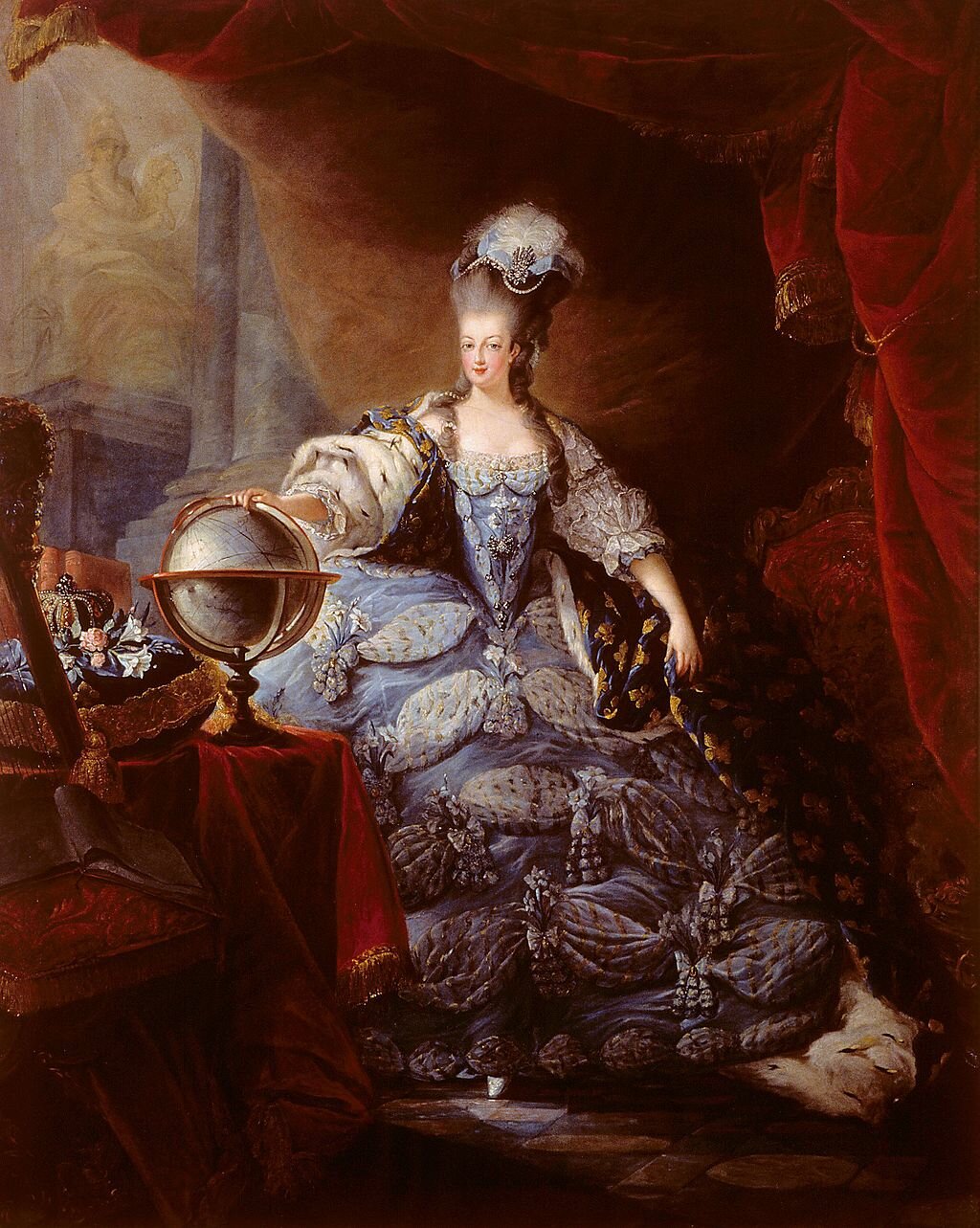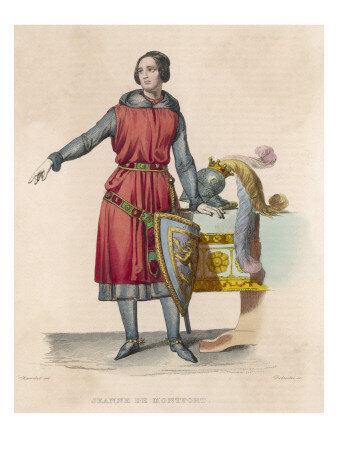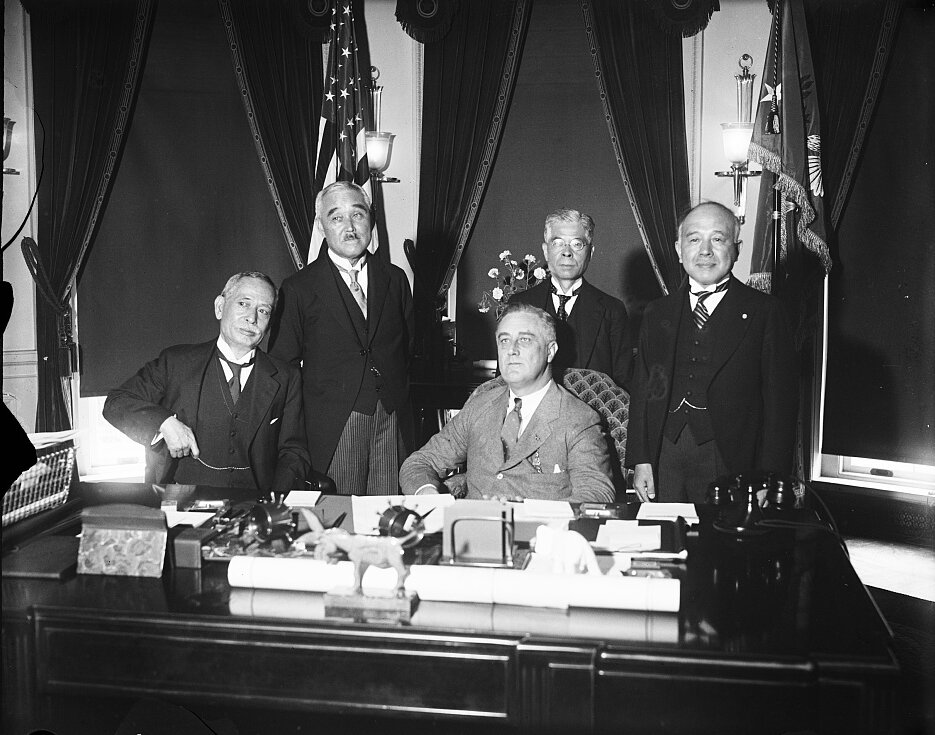Ruth Bader Ginsburg (1933-2020) was on the US Supreme Court from 1993 until 2020. She was a very influential figure while on the Supreme Court and part of the liberal wing of the court. Here, Amanda L. Walton tells us about Ginsburg’s cases as an attorney, her time as part of the Supreme Court, and her lasting legacy.
Ruth Bader Ginsburg accepting the Supreme Court nomination in 1993. President Bill Clinton is next to her.
“Real change, enduring change, happens one step at a time.” – Ruth Bader Ginsburg
Ruth Bader Ginsburg (RBG) spoke these words about the impact of change and how we all can make a difference, but there couldn’t be better words to describe her lengthy career working towards equality and justice for all. Ginsburg was a pioneer, activist, lawyer, and eventually justice who dedicated her life to fighting for equality and social justice. She is one of the few women who truly worked their way up the patriarchal ladder.
Her career is defined by the work that she did to help ensure that women would have gender equality and marginalized peoples would have equal rights under the law. She co-founded the Women’s Rights Project under the American Civil Liberties Union (ACLU) in 1961. This project helped to guarantee that women would have equal pay and equal employment rights.
Fighting for Equality – A Look at RBG’s Landmark Cases as an Attorney
Ruth started at Harvard Law School in 1956 where she was one of just nine women who were admitted to the program. Harvard only began allowing women to attend law school in 1950. As a lawyer, she would try six cases in in front of the United States Supreme Court.
While Ginsburg was largely fighting alongside the ACLU to prove that women deserved to have equal protections and rights under the law, she would go on to try cases that dealt with issues facing men. This was a unique and strategic way of being able to open the doors for cases where women could prove that they were being discriminated against legally.
Equal Protection Under the Law – Frontiero v. Richardson
On January 17, 1973, Ginsburg first stepped foot into the Supreme Court to argue for the ACLU and assist with expertise and insight that has a bearing on the case. In this case, Shannon Frontiero had sought to have her husband get the dependent’s allowance that her fellow soldier’s wives were receiving. The law at the time stated that husbands could not be considered dependents unless their wives were the providers of more than 50% of the total income. In a ruling on May 14, 1973, the court ruled that this violated the due process clause and equal protection requirements based on the fact that the government could not legally justify gender-discrimination, as it was the same as race-discrimination.
This case was one of the first to discuss gender discriminations and how women and men should be viewed the same under the law.
Arguing Against Gender Clauses – Kahn v. Shevin
Ginsburg argued for the appellee on February 25 & 26, 1974 in a case based on gender biased Florida law that allowed for widows to be granted a $500 property tax exemption that did not apply to widowers. She lost this case with a ruling on April 24, 1974 that stated that women faced more hardships when they were without a spouse and therefore needed this type of protection that men did not.
While the ruling was not in her favor, the dissents argued that gender classifications (a classification where there is no control) should be looked at judicially and that to have a gender-based classification there needed to be a significant justification that was not present.
Social Security Gender Discrimination Cannot Stand – Weinberger v. Wiesenfeld
On January 20, 1975 Ginsburg argued for the appellee in Weinberger v. Wisenfeld. In this case Stephen Wiesenfeld had applied for survivor benefits for himself and his son after his wife died in childbirth. Wiesenfeld claimed that he was being discriminated against based on sex, because if he had died both his wife and son would have received benefits. The Supreme Court issued a ruling on March 19, 1975 that gender-based discrimination did not serve a valid legislative purpose.
This case paved the way for women to fight against gender discrimination as the court had ruled that there was no legislative purpose for gender-based discrimination.
Old Gender Laws Must Go -- Challenging the 5th Amendment with Califano v. Goldfarb
In this case, Ginsburg argued on October 5, 1976 for the appellee, Leon Goldfarb. He had been widowed and was denied Social Security survivor’s benefits because he was a man and he was not getting half of his support from his wife at the time of her death. Under Social Security Act 42 U.S. C. Section 402 men were required to receive at least half of their income from their spouses in order to claim this benefit, but women were excluded from this clause. The Supreme Court ruled Goldfarb’s favor on March 2, 1977.
The courts rejected the generalization that women were more likely to depend on men for support as the old notions of gender law did not apply to justify different treatment of widowers and widows.
Tried by a Representative Jury – Challenging the 6th & 14th Amendments with Duren v. Missouri
Ginsburg argued the case of Duren v. Missouri on November 1, 1978. In this case, she challenged the petitioner’s right to be tried by a fair cross section of the community (a right that is guaranteed by the 6th & 14th Amendments to the Constitution). The issue came from a Jackson County, MO rule that allowed all women to be exempted from jury duty on request. Thus, in a county where the population was 54% white women, the jury for his case was comprised of all men who were selected from a panel that included 2 women and 48 men. On January 9, 1979, the Supreme Court ruled that selection process violated Duren’s Constitutional rights.
This case proved that the underrepresentation of women was unconstitutional.
Ginsburg’s 6th Supreme Court case was Edwards v. Healy (argued on October 16, 1974 and decided on June 9, 1975) which was vacated and reprimanded after the State of Louisiana changed their state constitution to be on the right side of the law.
Serving the People – A Look at Ruth Bader Ginsburg’s Time as a Supreme Court Justice
In 1993, President Bill Clinton appointed Ruth Bader Ginsburg to the Supreme Court. However, before she served there, she was serving on the U.S. Court of Appeals for the District of Columbia which she was appointed to in 1980 by President Jimmy Carter.
While being seated as a justice for 27 years, Ginsburg heard a number of landmark cases. It would be impossible to talk about all of the cases that she was a part of without writing a book. There are some landmark cases that she took part in whether through decisions or dissents that show her as a champion for women’s rights.
Cosmopolitan Magazine politics contributor Sara Li argues that there are five basic rights that we would not have without Ruth Bader Ginsburg’s Supreme Court rulings. These are:
· The right to equal pay and a fair wage
· The right to have an abortion
· The right to attend any public university regardless of if you are a man or a woman
· The right to marry anyone whom you may fall in love with
· The right to be a part of the community if you have a mental illness
Court Decisions
Ruth Bader Ginsburg was a part of many landmark court decisions. Many of the cases that she wrote the opinion for had to do with social justice or women’s rights issues.
Ginsburg wrote the opinion that gender equality is a Constitutional right in 1996 under the U.S. v. Virginia. The case centered around the Virginia Military Institute’s gender discrimination that only allowed men to attend. As a public university, it was decided that gender discrimination would not be tolerated in higher education. This case supports that women have a place in all areas of public life even within the U.S. military.
Ginsburg also fought for those who were suffering from mental illness. She wrote the opinion for Olmstead v. L.C. in 1999. This case focused on the rights of individuals who were suffering from mental illness and her opinion supported that individuals suffering from mental illness are guaranteed the same rights and protections under the law. The case revolved around two women who had finished treatment at a state hospital in Georgia and were cleared for release, but then held against their will in isolation.
She became a champion for marriage equality. When ruling on Obergefelly v. Hodges in 2015 which granted the right to marriage for same sex couples, The Guardian reported that she was asked about procreation and she argued that a couple in their 70s could not procreate but was still allowed to marry. She went on to say, “Marriage was a relationship of a dominant male to a subordinate female that ended as a result of this court’s decision in 1982 when Louisiana’s Head and Master Rule was struck down… Would that be a choice that states should (still) be allowed to have? To cling to marriage the way it once was.”
In 2007 she wrote the dissent in Ledbetter v. Goodyear which was a case that centered around the gender wage gap. She argued that the law was biased, because it did not account for the fact that comparative pay information was not readily available for employees. She urged Congress to amend Title VII. It was not until 2009, when Obama took office, that this would be signed into law. The Lily Ledbetter Fair Pay Act was the first bill that Obama signed after taking office.
Finally, in 2016 she supported the upholding of Roe v. Wade in Whole Women’s Health v. Hellerstedt. This case challenged the Texas abortion bill that put unnecessary restrictions on the process to obtain an abortion that made abortions inaccessible to many women. The court ruled that the bill was to be struck.
Court Dissents
Communications professor, Katie L. Gibson, argues in her book Ruth Bader Ginsburg’s Legacy of Dissent: Feminist Rhetoric and the Law that one of Ginsburg’s most powerful attributes is that she was willing to take a stand on issues of democracy through her court dissents. On page 2 she writes, “one of her great contributions to American law is that she boldly challenged the traditional boundaries of legal language to make way for a feminist jurisprudence and more democratic rule of the law.”
One of her major dissents was with the 2000 Bush v. Gore where instead of writing “respectfully” in her dissent she began “I dissent.” This case changed the course of history for voting and elections as there was a Florida Supreme Court request for a manual recount of the presential election votes. This case has paved the way that in a tight election, there is no recourse for vote recounts, even if there could be potential errors with automated voting machine readings. Her dissent is powerful because it is a dissent that protects the voting rights of all citizens.
In 2013 when she wrote her dissent on Shelby County v. Holder which was a case that resolved around minority voting suppression, she said, “Throwing out preclearance when it has worked and is continuing to work to stop discriminatory practices is like throwing away your umbrella in a rainstorm because you are not getting wet.” The court’s ruling was that it was a violation of the Constitution for Congress to set election terms rather than the state.
In the 2014 case of Burwell v. Hobby Lobby Ginsburg wrote her dissent against the ruling that the company would not have to provide access to birth control and emergency contraceptives for their employees. Her dissent argued that it gave a disadvantage to employees who had different religious views than their employers.
Finally, in one of her last dissents in July 2020, Ginsburg argued that striking down Obamacare’s contraceptive mandate was forcing women to have to look into alternative healthcare options on their own. She argued that this was forcing workers to “fight for themselves.”
Legacy
Whether it was through the landmark court cases that she fought in front of the Supreme Court or her opinions and dissents as a Supreme Court justice, RBG paved the way for women to stand up and fight against the suppressive culture within the United States that often led women to believe that there were things that they could not do. In 2018 On the Basis of Sex was released about her career. In an article on the popular website The Daily Beast Ginsburg fact checked the film and said, “This film is part-fact, part-imaginative, but what’s wonderful about it is that the imaginative parts fit in with the story so well.”
Ruth Bader Ginsburg helped to pave the way for social justice and gender equality. In 2017 she spoke at Stanford and said, “I wish that there was a way that I could wave a magic wand and put it back to where people were respectful of each other, when Congress worked for the people, and not just along party lines. That’s the kind of legislature that the United States should have. I hope that comes when I’m still alive.” Sadly, with the current turmoil amidst the COVID-19 pandemic and one of the most contested elections in history, Ginsburg lost her long battle with cancer on September 18, 2020 before this wish could be realized.
What do you think about Ruth Bader Ginsburg’s legacy? Let us know below.
References
https://www.inc.com/peter-economy/17-powerfully-inspiring-quotes-from-ruth-bader-ginsburg.html
https://libguides.wlu.edu/c.php?g=601727&p=4166850
https://www.aclu.org/other/about-aclu-womens-rights-project
https://www.oyez.org/cases/1978/77-6067
https://www.oyez.org/cases/1976/75-699
https://www.oyez.org/cases/1974/73-759
https://www.oyez.org/cases/1974/73-1892
https://www.oyez.org/cases/1973/73-78
https://www.oyez.org/cases/1972/71-1694
https://www.teenvogue.com/story/ruth-bader-ginsburg-supreme-court-rulings-to-know-about
https://supreme.justia.com/cases/federal/us/421/772/
https://en.wikipedia.org/wiki/Amicus_curiae
https://www.cnn.com/2020/09/18/politics/rbg-supreme-court-decisions-dissents/index.html
Gibson, Katie L. Ruth Bader Ginsburg’s Legacy of Dissent: Feminist Rhetoric and the Law. Tuscaloosa, Alabama: The University of Alabama Press, 2018.
Resnik, Judith. “Opening the Door: Ruth Bader Ginsburg, Law’s Boundaries, and the Gender of Opportunities,” Columbia Journal of Gender and the Law 25, no. 1 (2013): 81-91.
Rurbio-Marín, Ruth. “Notorious RBG: A Conversation with Supreme Court Justice Ruth Bader Ginsburg,” International Journal of Constitutional Law 15, no. 3 (2017): 602.
Siegel, Reva B. “Equality and Choice: Sex Equality Perspectives on Reproduction Rights in the Work of Ruth Bader Ginsburg,” Columbia Journal of Gender and the Law 25, no. 1 (2013): 63-80.
















